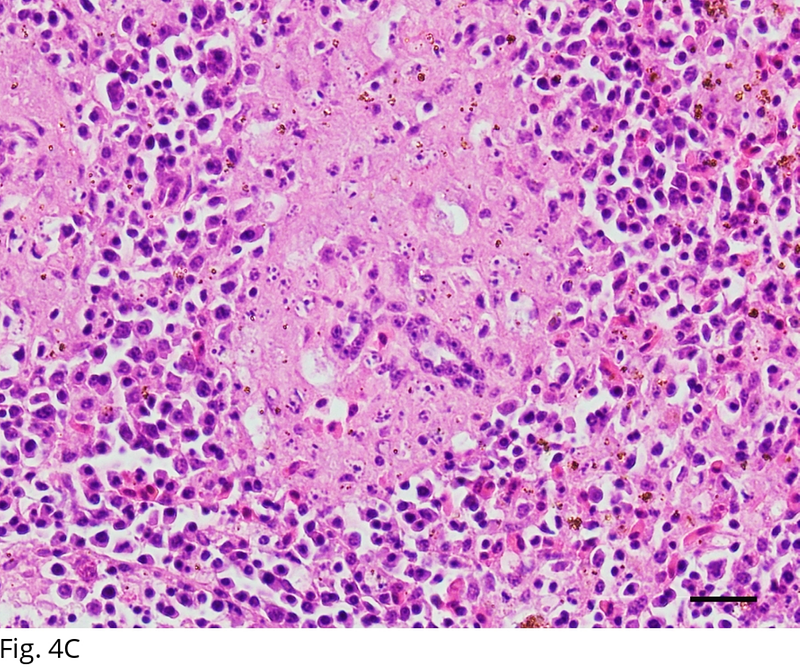Pathologic and phylogenetic characterization of Usutu virus infections in free-ranging wild birds in Switzerland (2015-2020)

Pathologic and phylogenetic characterization of Usutu virus infections in free-ranging wild birds in Switzerland (2015-2020)
Pisano, S. R. R.; Imlau, M.; Sattler, U.; Origgi, F. C.
AbstractUsutu Virus (USUV) is an emerging flavivirus causing fatal disease in free-ranging and captive birds but also infecting mammals and representing a significant zoonotic agent in Europe, making monitoring and investigations of this viral agent crucial both for conservation and public health. We carried out a retrospective investigation focusing on free-ranging wild birds confirmed to be USUV infected examined at the Institute for Fish and Wildlife Health (FIWI), Switzerland. The pathology and virology findings together with the phylogeographic and environmental data were examined for underlying factors to the dynamics of the USUV infection in Switzerland, between 2015 and 2020, with particular focus to the major peak of 2018. USUV infection was confirmed by reverse transcription-PCR in 67 birds, with common blackbirds (Turdus merula, 73%; 49/67) being overrepresented, showing signs of diseases including poor body condition (84%; 56/67) and splenomegaly (75%; 50/67). Histology (n=34) revealed changes in the heart (58%; 19/33), the central nervous system (67%; 22/33) and the liver (62%; 21/34). Of interest, the splenic changes (86%, 25/29) showed different, but likely correlated phenotypes, characterized by the presence of discrete and/or diffuse histiocytic infiltrates in the congested and lymphoid depleted spleen parenchyma, possibly reflecting different stages of the disease. Phylogenetic analysis unambiguously revealed that the recent USUV infections were predominantly caused by strains of the Europe 3 lineage. USUV Africa 3 strains were detected exclusively from southern Switzerland in one location (two blackbirds). Our investigation revealed intralesional Usutu viral RNA consistent with infection in previously undescribed hosts (Corvus frugilegus, Cygnus olor) and provided new insights into the pathogenesis and the ecology of the disease. The environmental data suggested the occurrence of unique weather conditions, possibly boosting the mosquito population and favoring an unprecedented increase of cases in 2018. Finally, the increase in genetic diversity of the circulating strains might have contributed to the recorded high mortality in 2018.